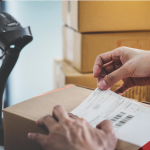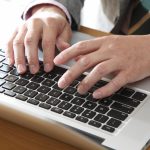Digital or Offset Printing?
Digital and Offset Book Printing
What’s the difference, and what’s the best print method for your project?
You’ve completed your book and prepped your files, and now you’re ready to send it to print! Should you utilize digital printing or offset printing? What’s the difference? Whether you’re publishing a full-color children’s book or simple black and white instruction manuals, it’s essential to understand your printing options and how they could affect your print project.
Print service providers, for many years, have traditionally used offset printing. Offset printing can produce high-quality books at a lower cost per unit, so it is often used for high-volume runs. But many times, the cost savings associated with offset printing are minimal because of the shipping and storage fees.
More than 60% of books printed at CHG include a combination of digital and offset printing methods.
Digital Short-Run Printing
Digital printing capabilities help achieve both speed-to-market and the quality your readers expect. Digital printing allows authors to reduce inventories, personalize individual copies, and repurpose content seamlessly across new book formats.
Digital toner-based printing uses electrostatic rollers called “drums” to apply toner and add full color onto the paper. The drums, printing one color at a time, use an electrostatic charge that attracts toner. The toner is then applied onto the sheet, passed through a high-heat unit, and fused onto the paper.
Digital Printing Advantages
- Variable Data – Digital printing allows customized copy on individualized pieces.
- Short-Runs – Most print quantities below 500 copies are typically better suited for digital printing.
- Inventory Management – Digital printing allows for effective print management by only printing what you need, removing bulk stock.
- Quick Turnaround – There are minimal press and binding setup, allowing rapid turnaround times
Large-Run Offset Printing
Offset printing utilizes larger, sheet-fed presses, providing consistent, rich color. If you’re printing more than 500 copies, offset printing is typically the more affordable method.
Offset printing uses etched metal plates that apply ink onto a sheet of paper. The setup for offset printing generally requires more time than digital printing. The metal plates need to be etched and applied to the rollers that transfer the ink directly onto the paper. Each color requires a unique plate. Then, the offset press needs to be run for a few minutes on “scrap” sheets of paper until the plates are full of ink; think of it as “startup” sheets that are eventually recycled.
Offset Printing Advantages
- Large-Runs – Offset printing is the most affordable way to print large orders. With offset printing, the cost per copy gets lower as the quantity increases.
- Larger Format – Offset presses can print on larger paper sizes. For example, a 40” press can accommodate approximately 25” x 38” flat page size.
- Specialized Colors & Techniques – Offset presses can print Pantone colors and utilize gloss/dull varnishes to covers and dust jackets for added texture and various finishes.
CHG’s extended service capabilities bring you endless options. We offer print solutions for both small and large projects. Our short-run digital service will help you achieve greater control of your inventory, allowing you to print what you need when you need it. If you need more copies, the transition to large-run offset printing is cost-effective and straightforward. Ready for a quote? Reach out to your sales representative today, or visit www.colorhousegraphics.com/quote






